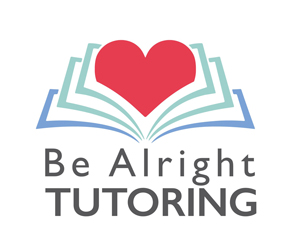What is Dysgraphia?
“Dysgraphia” is another term used frequently in the world of learning disabilities, but few parents understand what this diagnosis really means for their child. Dysgraphia impacts a child’s writing skills in a wide variety of ways. This disability can range from difficulty holding a pen correctly to difficulties organizing thoughts into sentences and paragraphs.
According to the National Center for Learning Disabilities (NCLD), any of the following struggles are common for people with dysgraphia:
- Tight, awkward pencil grip and body position
- Illegible handwriting
- Avoiding writing or drawing tasks
- Tiring quickly while writing
- Saying words out loud while writing and/or extreme focus while writing
- Unfinished or omitted words in sentences
- Difficulty organizing thoughts on paper
- Difficulty with syntax structure and grammar
- Large gap between written ideas and understanding demonstrated through speech
How dysgraphia looks in real life
Josh, a fourth grader, gets aggravated any time his mom asks if he started a writing project. He puts off any writing assignment until the last moment, and, sometimes, avoids the assignments altogether.
Josh’s parents often sit with him at the dining room table to provide some structure during his writing homework. Frequently, Josh will tire of the writing assignments within 15 minutes of starting. His parents will get frustrated and push him harder to sit still and write. Josh pushes back, and the scene ends with Josh stomping off to his room.
This year, Josh is expected to read short chapter books and write about them. He also has to answer open-ended questions with written answers formed into paragraphs of six sentences.
Josh loves to read. He reads anything he can find about dinosaurs and baseball. Him mom has noticed he has not problem whatsoever answering the homework questions out loud. When asked to describe the events in a book, like a book report, Josh clearly understands the material and provides insightful analysis.
While his dad thinks Josh is being lazy, Josh’s mom is beginning to wonder if something else is going on.
After the diagnosis
How can you help a child with dysgraphia compete in an academic environment where writing is required in every subject? The bad news: Dysgraphia isn’t curable and medication doesn’t improve most symptoms. The good news: There are plenty of ways to lessen stress on kids with dysgraphia.
“Pressure” seems to be the operative word when it comes to dysgraphia. Imagine sitting in a classroom as an elementary student, preparing to take a spelling test. If you have dysgraphia, just holding the pen or pencil will be awkward. You will need longer to form your letters even if there’s little thought involved in spelling the word. Your brain will struggle to translate the word in your head onto paper, again taking longer than the other students. Chances are good you will feel a lot of pressure trying to keep up with the other kids as they work more quickly. You may even have a hard tome keeping up with the teacher’s pace. Add a few open-ended questions to the test, and kids may enter stress overload.
How to help
- Flexible time
Time is off the essence for kids with dysgraphia. Allowing more time for any written assignment or test eases some pressure from their shoulders.
- Oral answers
Lessen the amount of written information required. If a student understands the concepts and can answer test questions, like spelling and essay questions, orally, allow it. Learning writing skills is important, but kids with dysgraphia may need to learn writing differently. If the subject is history, science, or reading comprehension, then, offer flexibility.
- Talk it out
Talk-to-text can be a life saver for older students with dysgraphia. Often, when you ask a child with dysgraphia to answer an open-ended question, they have the answer. Writing skills may lag, but your child’s analytical skills could be above average. Encourage students to “talk out” writing assignments before committing them to paper. Using talk-to-text means students can eliminate some of the more frustrating pieces to writing.
- Type don’t write
Sadly, a lot of students with dysgraphia are chided for poor penmanship. Don’t. Learn how to advocate for your child. If typing is easier than handwriting, so be it. Plenty of typing apps and software will help even young children pick up typing basics. Don’t stress about the small stuff. These days, typing can easily replace even handwritten forms.
For parents: Advocate
If you suspect your child is struggling with dysgraphia, seek the proper assessments. Don’t assume your child’s school or teacher will pick up on their frustrations. And, don’t assume the school will put proper accommodations in place once there is a dysgraphia diagnosis.
Because the symptoms of dysgraphia sometimes subtle, teachers may not understand the level of frustration your child is experiencing. Trust your instincts. If taking a spelling test is causing your child to feel unwell on test day, pat attention.
Children may not have the skills to communicate their frustrations, but you, as the parent, will have a sense something is off.
Be Alright Tutoring offers remote assessments for dysgraphia, along with parental support for any accommodations needed in a school setting. Call Dr. Meg at: (727) 804-9078.

